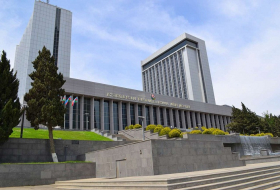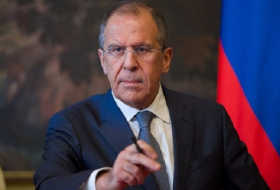The United States condemned Thursday’s launches, which came hours before Biden held his first White House press conference since taking office in January.
When asked if he agreed that North Korea was the top foreign policy issue he faced, Biden replied: “Yes.”
Biden had previously left North Korea entirely out of his maiden foreign policy speech in February, and in outlining eight diplomatic priorities earlier in March, his secretary of state didn’t focus on North Korea except to list it as one of several countries that pose a challenge.
The launches, which were North Korea’s first ballistic missile tests in nearly a year, underscored steady progress in its weapons programme since denuclearisation talks with the United States floundered under former President Donald Trump.
Biden said the United States remained open to diplomacy with North Korea despite its missile tests, but warned there would be responses if Pyongyang escalates matters.
South Korea’s President Moon Jae-in called the missile test “concerning,” saying Seoul, Pyongyang and Washington should not create hurdles for talks.
“Now is the time for the South, the North and the United States to make efforts to continue dialogue. It is never desirable to create difficulties for dialogue,” he told a ceremony commemorating soldiers who fought in clashes with the North in 2002 and 2010.
North Korea had been widely expected to conduct some kind of weapons test in the early months of Biden’s term as a way of signalling its resolve, gaining practical military capabilities, and boosting its leverage should talks resume.
While North Korea’s intentions were not yet entirely clear, Thursday’s tests were relatively restrained, said John Delury, a professor at South Korea’s Yonsei University.
“These tests come some time after Biden’s inauguration, and they are still at a low enough level that it gives the administration breathing room,” he said. “Regardless of North Korea’s intentions, however, the effect is to elevate the significance and move it up the administration’s agenda.”
The State Department said the launches violated multiple U.N. Security Council resolutions and threatened the region and the broader international community.
‘NEW PROJECTILE’
The new weapon is based on existing technology that was improved to carry a 2.5-ton warhead, KCNA reported.
“The development of this weapon system is of great significance in bolstering up the military power of the country and deterring all sorts of military threats,” said Ri Pyong Chol, the senior leader who oversaw the test, according to KCNA.
Photos released by state media showed a black-and-white painted missile blasting off from a military launch vehicle.
Missile specialists at the California-based James Martin Center for Nonproliferation Studies (CNS) said it appeared to be a missile that was unveiled at a major military parade in Pyongyang in October.
KCNA said Thursday’s test confirmed the missile’s capability to conduct “low-altitude gliding leap type flight mode,” a feature that makes such weapons harder to detect and shoot down.
MEASURED RESPONSE
The United Nations Security Council North Korea sanctions committee is due to meet on Friday to discuss the missile tests, at the request of the United States.
The move suggests a measured response by the Biden administration, as the sanctions committee is comprised of lower-level diplomats from the 15 council members, rather than the ambassador-level council that convened after North Korea fired ballistic missiles a year ago.
While rejecting American overtures, North Korea has also used measured language, insisting it will only return to talks if the United States drops hostile policies.
Analysts noted leader Kim Jong Un did not appear to attend the Thursday missile tests, with state media instead showing undated photos of him inspecting new passenger busses in Pyongyang.
Kim has vowed to try to improve living conditions for citizens as North Korea’s economy was ravaged by multiple crises, including international sanctions over its weapons programmes, natural disasters, and a border lockdown that slowed trade to a trickle in an effort to prevent a coronavirus outbreak.
More about: #NorthKorea
















































